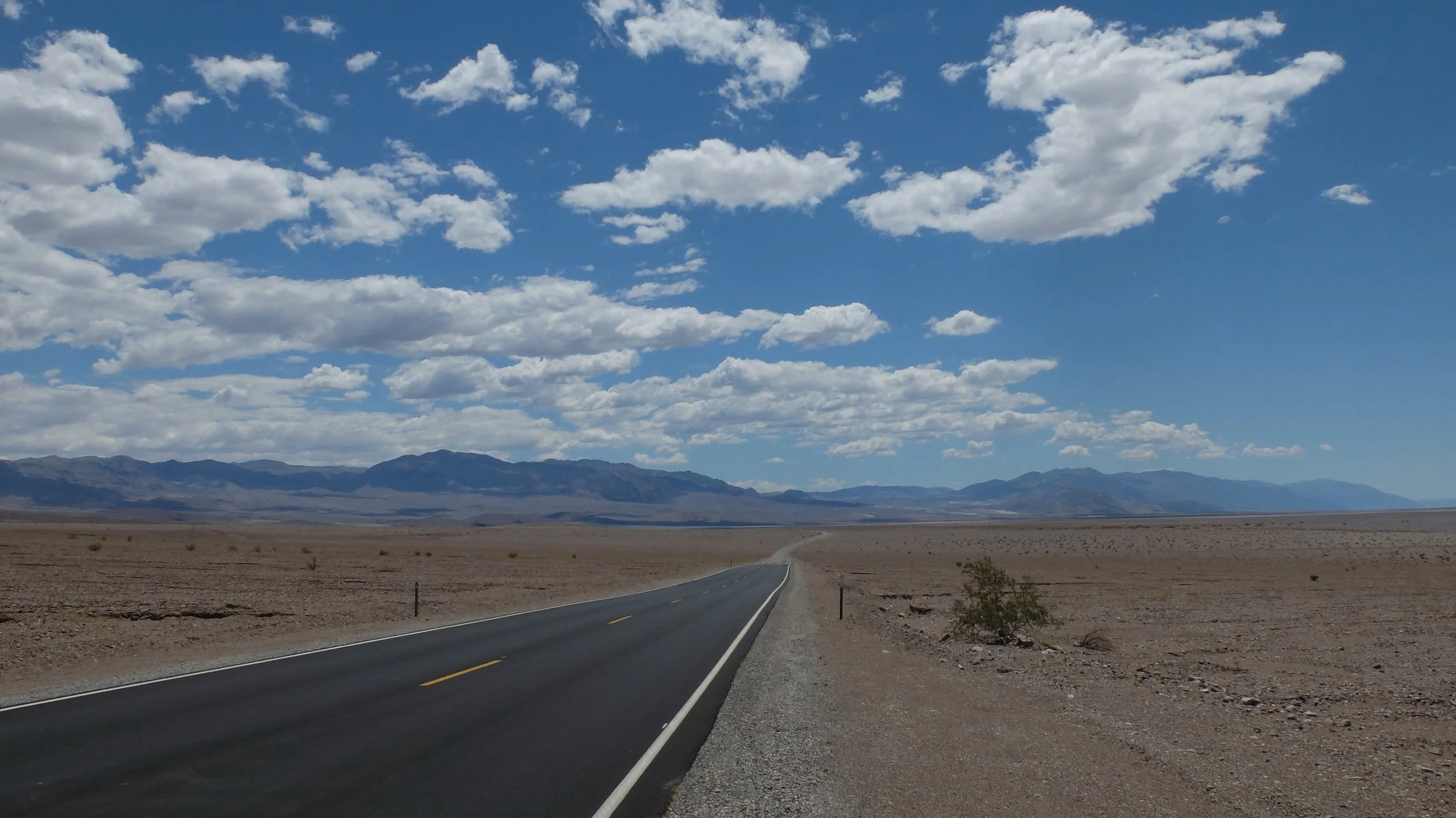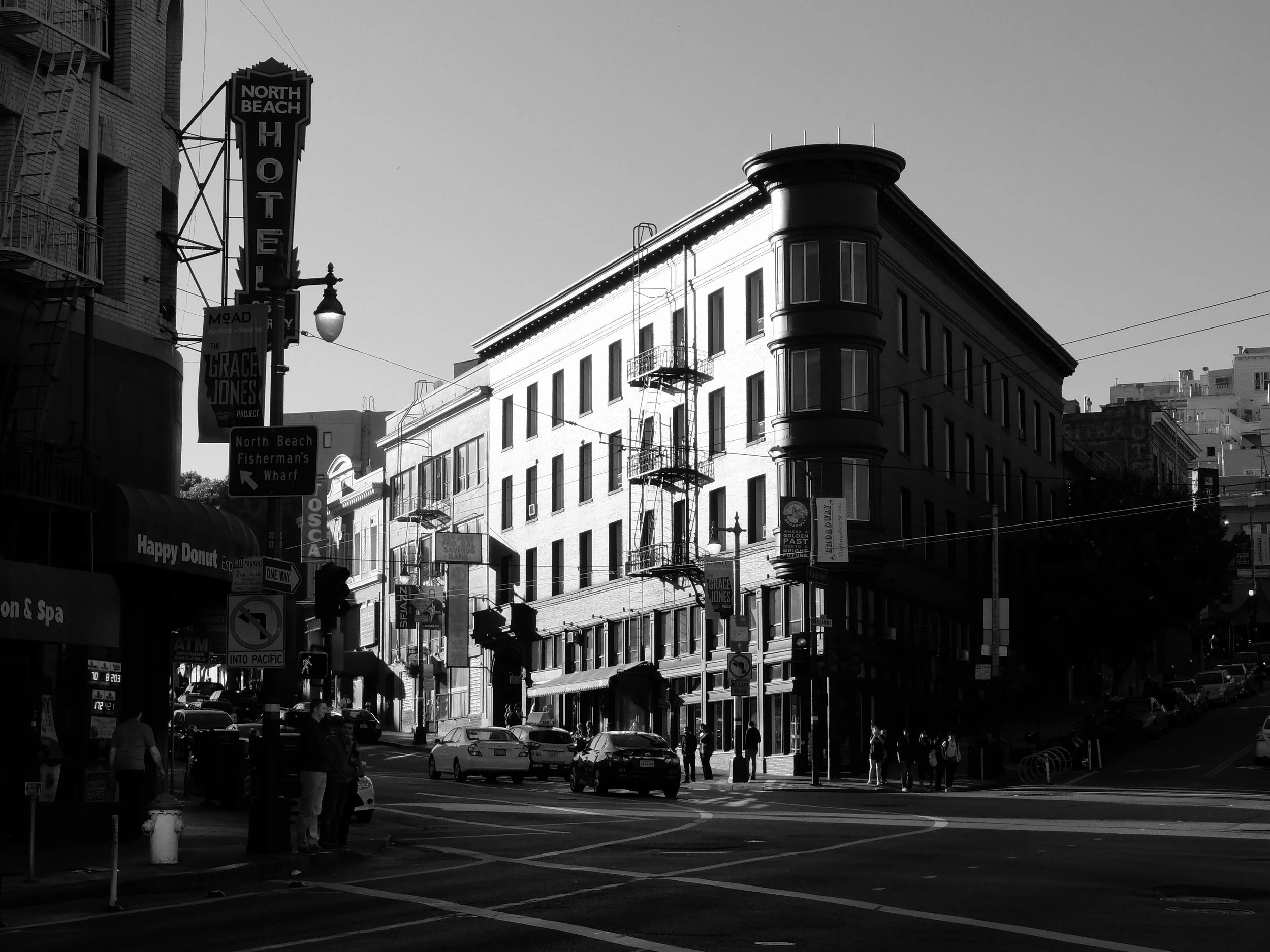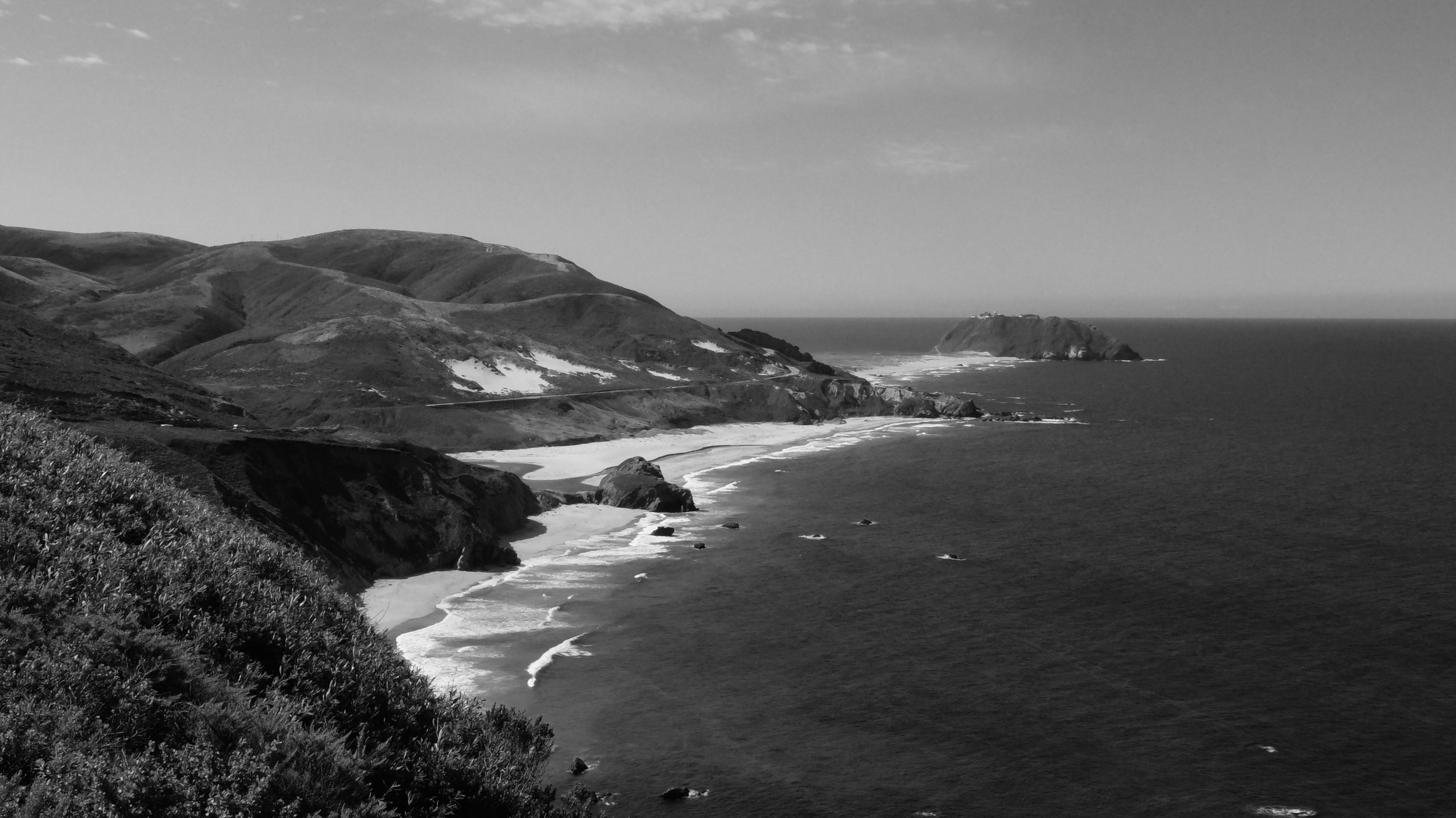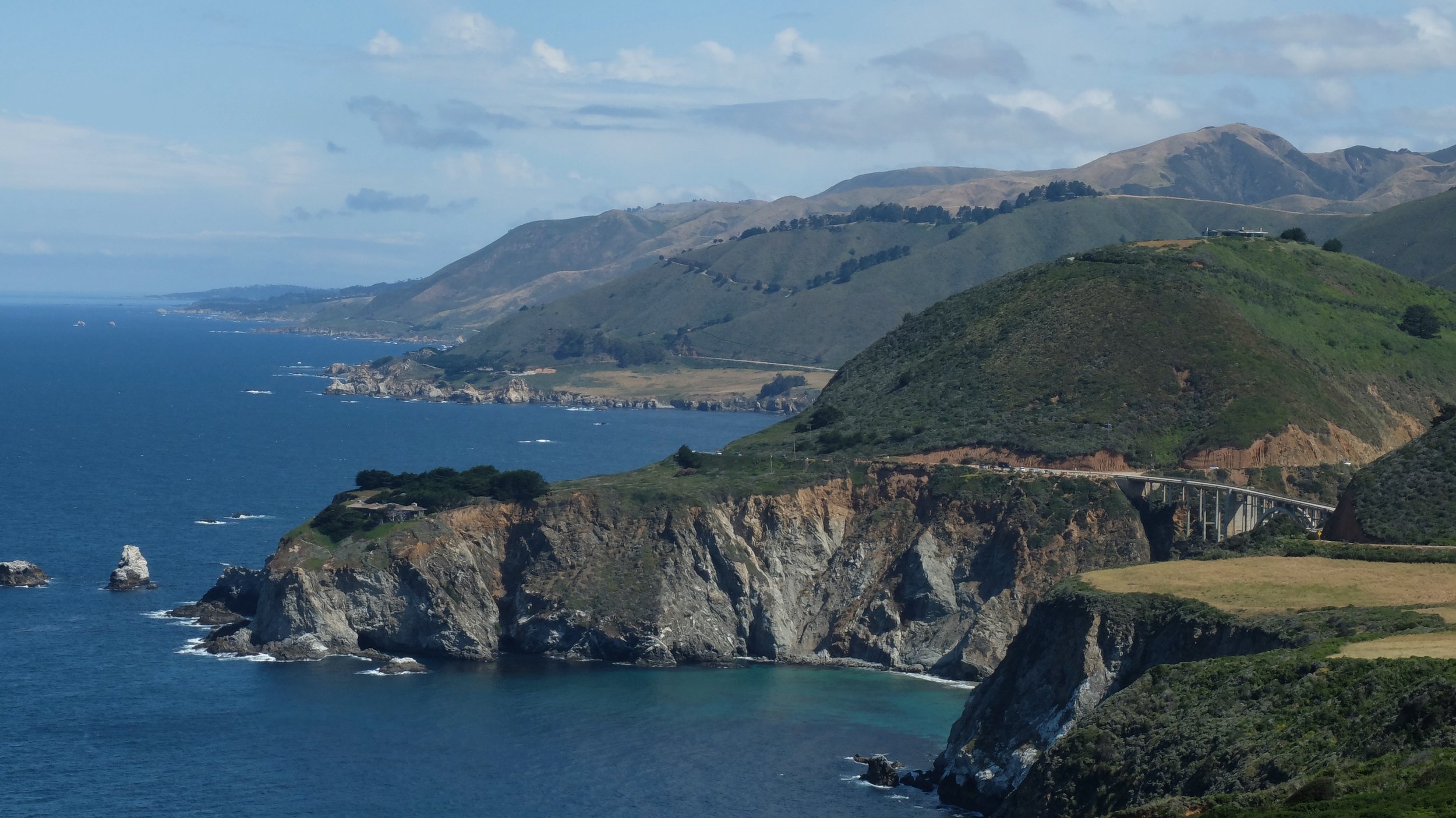Long Road out of Eden
It’s rumoured to be the view that convinced Soviet Cold War leader, Nikita Khrushchev that communism could never work. In 1959, gliding west into Los Angeles airport in his Tupolev 114, the sight of a sea of neat houses, many with their own swimming pool, was enough to convince him of the futility of his purpose. Centrally planned, command and control economies could never yield a comparable level of mass affluence and with it the lifestyle that ordinary people aspire to.
I’m enjoying the same view but from a Virgin Atlantic ‘Dreamliner’ with a sense of great anticipation rather than wearied resignation. We are about to rent two enduring icons of the American Dream, a Harley-Davidson Fatboy and Heritage Softail. In eight days, we plan to cram in Death Valley, Yosemite, Napa, San Francisco, the Pacific Coast Highway and Santa Barbara.
The ever-excellent Eaglerider Motorcycle Rental has depots all over the US and one conveniently close to the airport. They offer a range of steeds including RT’s and GS’s. But this is America and Harley-Davidsons look so right when framed by the great American landscape in the same way they look frankly ridiculous when ridden by carpet magnates around Batley.
So two Harleys it is and, next morning head out of the deeply unimpressive urban sprawl of Los Angeles towards Pahrump, just over the state line in Nevada. $40 gets us a perfectly acceptable Best Western and a further $40 gets us mildly giddy on frozen Margaritas and surprisingly good Mexican food at ‘El Jefes’.
There is no melodrama in the naming of Death Valley. Over 100 feet below sea level and 70 miles long, it’s 39.4 degrees in the shade the day we went through it. Only there is no shade. Nothing. Lord knows what it was in direct sunlight and high summer does not bear thinking about but if you tried to cross it on foot or by horse, one or both of you would probably snuff it. A camel might help but I’m sure Donald Trump will have announced plans to ban these by the time you read this.
We approached it from Nevada where the gateway is the ominously named ‘Death Valley Junction’. In the days when cars had their cooling systems and air-conditioning checked by a ranger before you were let in, this was probably a thriving town but now it is eerily quiet. A few miles on a sign points to ‘Dante’s View’ (ho ho) twelve miles up a twisting road. If you find your way out here, this is worth the detour for the view of the vast landscape that unfolds at the very top. The only sign of humanity is the road running through the valley floor, cars on it reduced to specks even through binoculars.
After a water stop in Furnace Creek, we check our fuel range and we’re fine to make it to the other side. But the road runs out after forty-five miles leaving us a worrying forty-two miles from the fuel stop we need to retrace our steps to. We make it but by four in the afternoon, the heat is still hanging like a cloak and we are still a hundred and forty miles from Bishop.
By the time we get there, we’ve done over 300 miles in searing heat and the beers at the Mountain View Microbrewery Restaurant hit the spot and then some. Anybody still labouring under the misapprehension that American beers are like making love in a canoe (f***ing close to water…) needs to search out these new-wave brewers. Living on the fringes of achingly trendy East London, I have developed a slight aversion to ‘Craft Beers’ as the movement has become synonymous with po-faced Hipsters and all the bull that goes along with this urban tribe. While Mountain View and others eschew this nonsense and set the bar impressively high on the quality front, it does come at the price of your sobriety: some are over 10% alcohol with several ‘session’ IPA’s clocking in at over 6%.
“The biggest peesh uvve sheet Hurley ave eever muade” is the considered verdict of a local backwoodsman in Lee Vining as he sees us dismantling the ignition switch of the Fatboy armed only with an adjustable spanner. He went on to explain Harley had been going steadily downhill on the quality front since 1969. Good news for him as he owned a 1968 model. He further opined that the modern ignition switches are particularly ‘sheet’ and prone to random failure. Consistent with his theory, this one had developed a habit of cutting out on freeways but this sounds worse than it was given the fact there was rarely any other traffic around.
The solution was to turn everything off, whimper softly with no one looking, then turn it on again to find everything had righted itself. On this occasion, this did not work but prodding it purposefully did. Some packing under the switch and crossed fingers got it going again but with a degree of nervousness. Tienega Pass awaits and this is not the place to break down. It’s a stunning piece of road that takes you into the very heart of Yosemite and the valley through which runs the Merced River. A sort of ‘Greatest Hits’ of the iconic American Great Outdoors awaits: El Capitan, Half Dome, Yosemite Falls and many other views familiar to those who have ever seen Ansel Adams’ peerless photographs of the region and all are within a mile or two of each other.
An overnight stop in the Tenaya Lodge is some well-deserved comfort after three budget nights. America does many things so well and big, well-run, luxurious hotels are one of them. Sitting out on the terrace sipping another superb beer before lobster and steak in the Embers restaurant makes me what to cry out, not for the only time during the week: “What a great country!”
It’s also in these venues you tend to see the very best of the American people. Outdoorsy, well-off, middle-class Americans really are the friendliest folk you could hope to meet. Countless times, complete strangers come up just to say hello, ask where you’re from and make suggestions of places you might visit or roads you might ride. All without being remotely overbearing or intrusive. Just outgoing, positive, humble and kind.
Route 120 out of Yosemite towards Stockton is the same delight as it was fifteen years ago. The New Priest Grade road (confusingly older than the Old Priest Grade) marks the end of the fun stuff as a fairground ride of switchbacks, twists and turns spits you out on a fairly dismal slog across the northern bay area and thence to Napa.
Dinner is in Yountville, a sort of foodie-Disneyland which has been transformed in twenty years from a nondescript off-freeway town that Mary Chapin-Carpenter might describe as ‘a blur from the driver’s side’ into a veritable theme park of eating and drinking. This is largely the work of one Thomas Keller, owner of the three-Michelin starred ‘French Laundry’ and various other establishments in the town.
This has acted as a magnet for other celebrated purveyors of Bacchanalian excess and many contemporaries have followed and set up shop here also. We ate at Keller’s one-starred ‘Bouchon’ as the ‘French Laundry’ is catastrophically expensive and has a rather prissy ‘gentlemen are expected to wear a jacket & tie’ dress code which we can’t be arsed with and wholly impractical when travelling by motorcycle. ‘Bouchon’ is a bit toppy price-wise and utterly incongruous as it’s done up to resemble a Parisian bistro. It’s also quite superb and if you yearn for a level of subtlety that even high-end American restaurants often lack, it’s a good place to aim for as the culinary high-spot of a trip if you’re into this kind of thing.
We cut across the county the next day following the route of Russian River to the Pacific Coast and Bodega Bay, the town in which the Alfred Hitchcock film, ‘The Birds’ is set. Often assumed to be fictional, it’s a real town alright and you can see why he chose it. The faded, clapboard houses with telegraph wires and power cables strung over the streets give it a crepuscular, remote, vulnerable atmosphere. ‘The Tides’ restaurant featured in the film only to burn down shortly afterwards. It’s subsequently been rebuilt and now serves a cardiologist’s worst nightmare of a brunch: lobster and crabs eggs benedict with hash browns and strong coffee. Bliss.
After obligatory photographs of San Francisco from the Marin Headlands, we spend a night in the city. Clinging to the side of the Hyde Street cable car in the velvet of an early evening as it crosses the canyon of California Street, the view of the Bay Bridge stretched out way in the distance is as magical as the first time I saw it.
Likewise, drinks in North Beach, dinner at the lovely ‘Seven Hills’ and then further drinks at a gay bar we stumbled into in Russian Hill (and, as two blokes on their own in floral shirts, fitted in seamlessly) rounds off a perfect Saturday evening.
Next day at lunch in Palo Alto with an ex-boss, it turns out there is trouble brewing in paradise. Despite - if it were a country - being the world’s seventh largest economy, California is chronically skint. Anywhere else in the world, this might mean multiple rounds of civic belt-tightening but not here. Chinese middle-class families have started piling into Silicon Valley residential property big-time. They fear an imminent melt-down in the Sino economy and have little faith in their government to allow free movement of capital in the aftermath. Instead, they have been squirrelling funds out of the country and driving the price of an average house in Palo Alto north of $4 million.
The state loves this as 2% property tax means they can milk $80,000 annually from the ‘average’ homeowner. And you thought the Council Tax was bad… This is more than enough, according to ex-boss (a committed Republican, it has to be said) to fund the lavish benefits enjoyed by public servants and fund the various other ingenious ways they have dreamt up to waste money. Following a two-hour wait to get through passport control at LAX a few days earlier, my personal regret is they can’t find enough spare cash to educate their immigration officers at the airports in queue management, common sense or indeed, basic manners.
Like it or not, the area between San Francisco and San Jose has affected all of our lives, usually for the better, more than any place on earth. It thrives because the vast well of funding and experience attracts the brightest and the best from all over the world. Not all are megalomaniac billionaires. For every one of these, there are thousands of hard-working engineers and marketers that make these world-shifting visions a reality and are the bedrock of Silicon Valley. Disturb this ecosystem with an influx of flight capital from authoritarian regimes and the locals will do the economically rational thing which is to sell up and cash in which is what they are doing.
The destination of choice seems to be Sun Valley, Idaho where the climate and terrain are similar and all the favoured outdoor pursuits of hiking, skiing, hunting and fishing are close at hand but without the eye-watering taxes that the new arrivals seem only too happy to pay.
The romantic desolation of Baker Beach, just south of San Francisco, is for many The Start of The Pacific Coast Highway road trip to Los Angeles. However, as it’s really only south of Carmel that it starts to meet expectations, my advice would be to cut through the hills south of San Francisco on Routes 35 and 9 to Santa Cruz before taking the fastest route towards Carmel.
The Famous ‘Seventeen Mile Drive’ around the Monterrey peninsula is a toll road with spectacular views. Or so I’m told… If you want to know what it’s like, you’ll need to ask someone else as motorcycles are banned unless you happen to be Clint Eastwood, a local resident to whom this exclusion does not apply. Failing this test, we spend an hour or two in the Great Man’s pub, the Hogsbreath Inn, in Carmel itself. Undeniably pretty, the town is a good stopover and conveniently sited for the next leg to Santa Barbara.
Back on Route 1, this 120 miles of Route 1 is what I imagined it would be like when I read an account of it in Superbike nearly forty years ago. Built as a work-creation project in the 1930s, it was part of Roosevelt’s New Deal to rebuild the economy following the banking crisis and the Great Depression. For a long time, it was considered a bit of a white elephant as the freeway or cheap flights make more sense to travel from LA to San Francisco.
Clinging to the coastline where big chunks of California have fallen into the sea, it’s one beautiful art-deco bridge or vertiginous drop after another and a timely reminder of what only governments can and should do. Grand projects need state sponsorship for the simple reasons that usually, it’s only governments can afford them, they make the world a better place and get people back to work when times are hard.
By contrast, mealy-mouthed ‘Quantitive Easing’ in response to the last financial meltdown has yielded no such lasting monuments. Nor is it likely to as the funds seem to have found their way into the balance sheets of the banks but not lent out again. Strange as I thought that was the intention and the justification for taxpayers propping up these Masters of the Universe. Again.
Santa Barbara divides visitors with many finding it irritatingly, smug, squeaky-clean and vacuous. There being no limits to the depths of our superficiality, we absolutely loved it. The long shadows cast by palms over the beach followed by a stroll to the end of the pier for fresh seafood and chilled Chardonnay as the sun sets might be cliched but cliches, like stereotypes, exist for a reason.
Yet more craft beers and chat with some locals in ‘Sandbar’ in the town followed by an ill-advised attempt by me at Ryan Adams’ ‘Lucky Now’ in the local karaoke bar rounds off a memorable last night before returning to Los Angeles.
So what of the Harley, electrical malfunctions notwithstanding? I first rode one in 2001 when I was a year back to riding motorcycles and still wobbling about unsteadily on a either Ducati 748 or K1200RS. By contrast, I loved the Harley with its low centre of gravity, the tolerance of the engine to fluffed or missed gear changes and the relaxed riding position.
In 2007, I did I very similar trip to this with my son on the back and the lack of power, minimal ground clearance and lack of creature comforts compared to the K1200S I had at the time were marked and beginning to grate but still tolerable.
In 2016, my point of reference is a K1600GT and while I know these are all totally unfair comparisons, they are ones that do need to be made. In fifteen years, BMWs are unrecognisable from what they were in 2001 but the Harley remains exactly the same.
Some of you will be frothing: “That’s the whole bloody point!” and I do get this. But I think the gap in capability is now a void and the deficiencies so manifest that the appeal of the Hog is now reduced to being purely ornamental. Characteristics that were once a contrast and point of affection are now just an irritation, particularly on a holiday where the destinations are as important as the roads.
Principally, they are just too slow to cover any serious distance. The running boards touch down on even the most modest bends causing the thing to try and go straight on, usually into either rock on one side or incoming traffic on the other.
The much-vaunted torque is definitely all there but delivered in unhelpful great lumps and it’s all out of puff at 3000 RPM. There is no accessory socket so your GPS is out of juice by lunchtime and the load-carrying capacity is so limited it needs supplementing with soft, insecure luggage meaning you can’t let the thing out of sight.
In places like Yosemite, this is a real problem as to come this far and not be able to leave the bike and go for a good wander is a wasted opportunity. So it’s an RT for me next time. And there will be a next time, and probably a next time after that.
The southern sections of Route 1 are mostly freeway or otherwise unremarkable so we head for the hills on Routes 150 and 126, dropping back down onto Mulholland Drive as we approach LA. The various canyons of Benedict, Coldwater and Laurel - familiar names but I don’t know why - slip past.
Last stop is the Griffith Park observatory, high in the Hollywood Hills. It’s where you get ‘that’ view of the Hollywood sign and the best aspect of Los Angeles. High above what is otherwise an architecturally unremarkable city, the boulevards and freeways stretch out in all directions as far as the eye can see.
Later, ‘Driving west on Sunset to the sea’ past the moneyed, gated communities of Bel Air and Holmby Hills, brings into sharp relief the remainder of that Steely Dan ode to the West Coast lifestyle and a realisation that after twelve years of riding holidays in Europe, I’ve really, really missed this place:
This is no one night stand
It's a real occasion
Close your eyes and you'll be there
It's everything they say
The end of a perfect day
Distant lights from across the bay…
‘Babylon Sisters’ by Walter Becker & Donald Fagen from Steely Dan’s 1980 swan song, ‘Gaucho’























